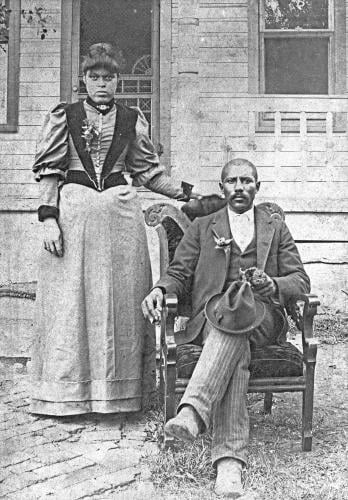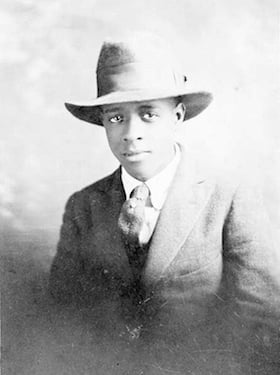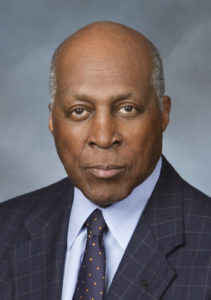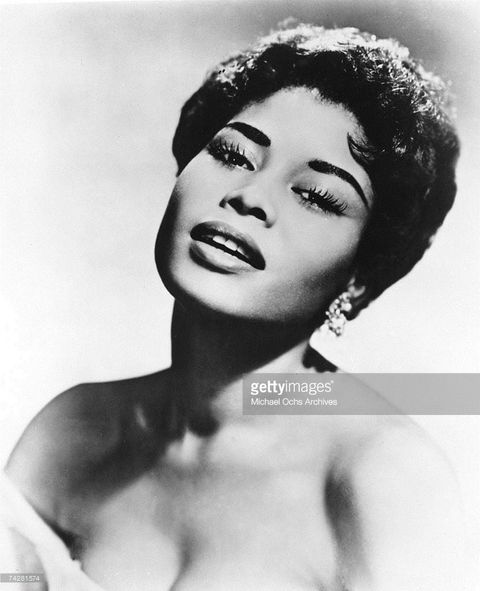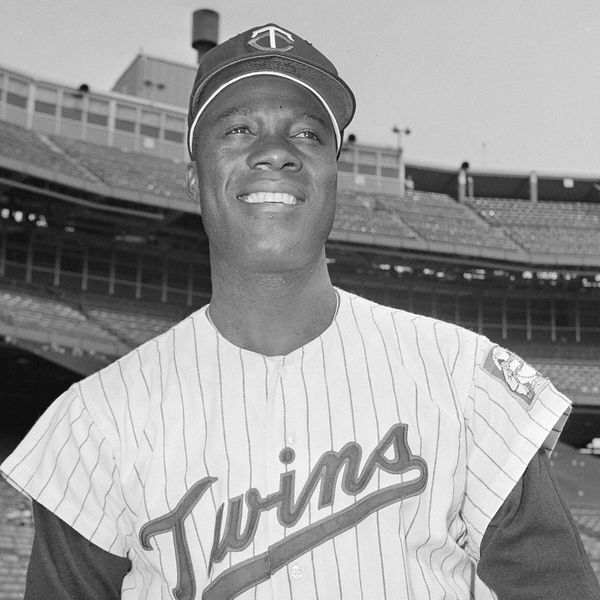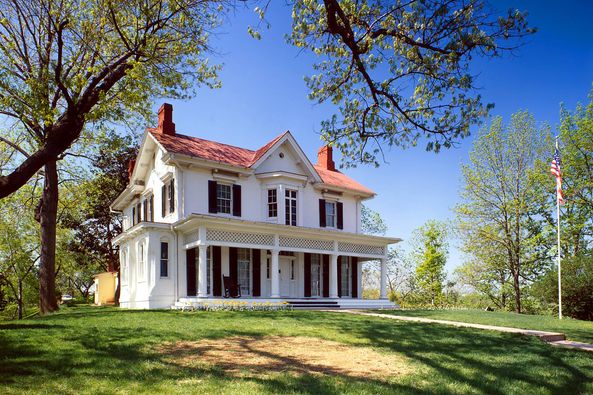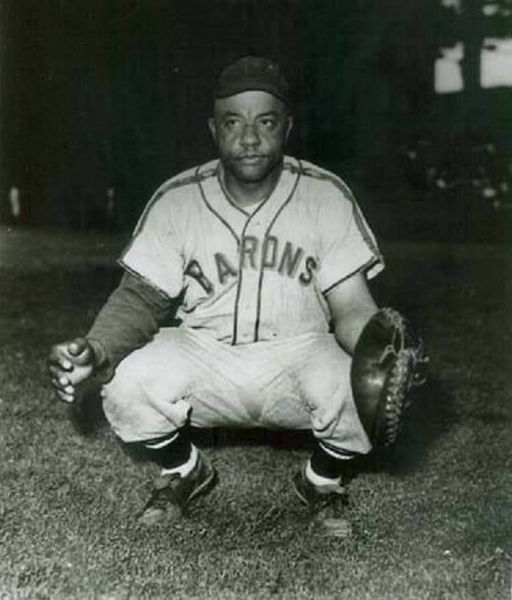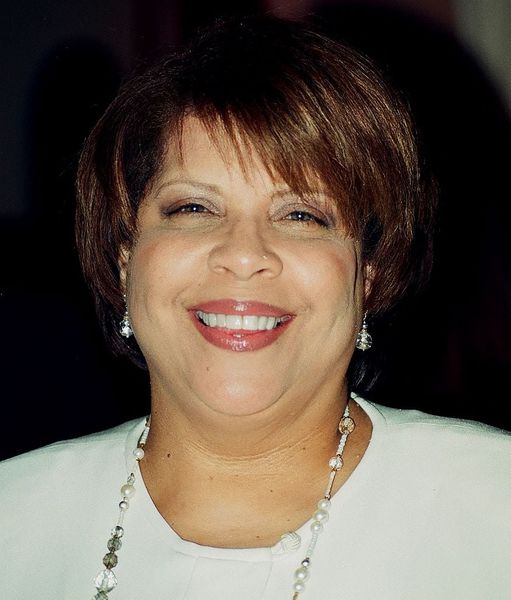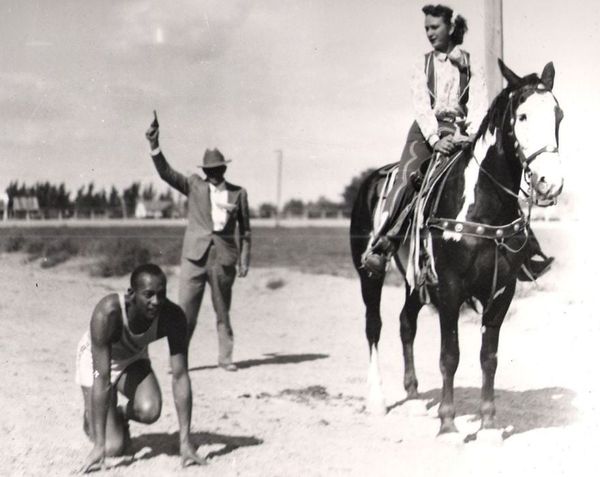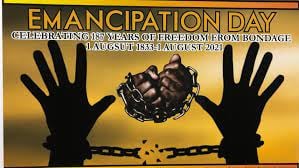GM – FBF Today’s American Champion was an American farmer and entrepreneur remembered as one of the wealthiest black Americans of the nineteenth and early twentieth centuries.Known as the “Potato King of the World” by 1902, Groves optimized potato growth methods, out-producing anyone else in the world to that point. His vast financial success—analyzed further in Booker T. Washington’s The Negro in Business (1907)—was utilized to help combat racism by providing economic opportunities for other black Americans.Today in our History – August 17, 1925 – Junius George Groves (April 12, 1859 – August 17, 1925) died.Junius George Groves, the son of Martin and Mary Anderson Groves, was born in slavery on April 12, 1859, in Green County, Kentucky. After emancipation, he received some public schooling three months out of the year, but taught himself to read, write, and understand mathematics. As a freedman, with just 90 cents to his name, Groves ventured to Edwardsville, Kansas, during the Exodus of 1879, where he married Matilda E. Stewart a year later.The couple had 14 children, 12 of whom survived into adulthood. After working as a sharecropper, Groves began purchasing farmland in 1884; by 1905, his holdings included about 500 acres. He and Matilda grew the farm and were able to build a 22-room mansion on the property. Groves purchased and shipped produce—most famously potatoes—throughout North America. His other financial ventures included owning and operating a general goods store in Edwardsville, stock in mines in Indian Territory and New Mexico, and stock in Kansas banks; he also founded or co-founded the Negro Business League, the Pleasant Hill Baptist Church, the Kaw Valley Potato Association, and the Sunflower State Agricultural Association. Booker T. Washington, who featured Groves in his book The Negro in Business (1907), had high praise for him, describing Groves as “our most successful Negro farmer.” By 1902, Groves was considered the “Potato King of the World”. His superior methods led to the production of 721,500 bushels of the crop in a single year, out-producing anyone else in the world to that point. His worth was estimated at $80,000 in 1904 and at $300,000 in 1915; he is considered one of the most prosperous black Americans of the late nineteenth and early twentieth centuries.At the height of his success, he had constructed a 22-room mansion equipped with the latest comforts of the era. Groves utilized his wealth and influence to combat racism. During the growing season, as many as 50 laborers—both black and white—worked on his farm. He founded a black American community center in Edwardsville and a golf course for black citizens, perhaps the first of its kind in the country. Groves died of a heart attack at the age of 66. His funeral, one local newspaper reported, was the “largest ever in Edwardsville”; he is thought to be buried in Groves Cemetery, near the community center he founded. Research more about this great American Champion and share it with your babies. Make it a champion day!
Category: Brandon Hardison
GM – FBF – Today’s American Champion was an American novelist active during the Harlem Renaissance.
GM – FBF – Today’s American Champion was an American novelist active during the Harlem Renaissance. He also wrote essays, worked as an editor, and was a publisher of short-lived newspapers and literary journals. He is best known for his novel The Blacker the Berry: A Novel of Negro Life (1929), which explores discrimination within the black community based on skin color, with lighter skin being more highly valued.Today in our History – August 16, 1902 – Wallace Henry Thurman was born.Thurman was born in Salt Lake City to Beulah and Oscar Thurman. When Thurman was less than a month old, his father abandoned his wife and son. It was not until Wallace was 30 years old that he met his father. Between his mother’s many marriages, Wallace and his mother lived in Salt Lake City with Emma Jackson, his maternal grandmother. Jackson ran a saloon from her home, selling alcohol without a license. Thurman’s early life was marked by loneliness, family instability and illness. He began grade school at age six in Boise, Idaho, but his poor health eventually led to a two-year absence from school, during which he returned to his grandmother Emma in Salt Lake City. From 1910 to 1914, Thurman lived in Chicago. Moving with his mother, he finished grammar school in Omaha, Nebraska.During this time, he suffered from persistent heart attacks. While living in Pasadena, California in the winter of 1918, Thurman caught influenza during the worldwide Influenza Pandemic. He recovered and returned to Salt Lake City, where he finished high school.Thurman was a voracious reader. He enjoyed the works of Plato, Aristotle, Shakespeare, Havelock Ellis, Flaubert, Charles Baudelaire and many others. He wrote his first novel at the age of 10. He attended the University of Utah from 1919 to 1920 as a pre-medical student. In 1922 he transferred to the University of Southern California in Los Angeles, but left without earning a degree.While in Los Angeles, he met and befriended the writer Arna Bontemps, and became a reporter and columnist for a black-owned newspaper. He started a magazine, Outlet, intended to be a West Coast equivalent to The Crisis, operated by the NAACP.In 1925 Thurman moved to Harlem. During the next decade, he worked as a ghostwriter, a publisher, and editor, as well as writing novels, plays, and articles. In 1926, he became the editor of The Messenger, a socialist journal addressed to blacks. There he was the first to publish the adult-themed stories of Langston Hughes. Thurman left the journal in October 1926 to become the editor of World Tomorrow, which was owned by whites. The following month, he collaborated in founding the literary magazine Fire!! Devoted to the Younger Negro Artists. Among its contributors were Hughes, Zora Neale Hurston, Richard Bruce Nugent, Aaron Douglas, and Gwendolyn B. Bennett.He was able to publish only one issue of Fire!!. It challenged such figures as W. E. B. Du Bois and African Americans who had been working for social equality and racial integration. Thurman criticized them for believing that black art should serve as propaganda for those ends.He said that the New Negro movement spent too much energy trying to show white Americans that blacks were respectable and not inferior.Thurman and others of the “Niggerati” (the deliberately ironic name he used for the young African American artists and intellectuals of the Harlem Renaissance) wanted to show the real lives of African Americans, both the good and the bad. Thurman believed that black artists should fully acknowledge and celebrate the arduous conditions of African American lives. As Singh and Scott wrote,Thurman’s Harlem Renaissance is, thus, staunch and revolutionary in its commitment to individuality and critical objectivity: the black writer need not pander to the aesthetic preferences of the black middle class, nor should he or she write for an easy and patronizing white approval. During this time, Thurman’s flat in a rooming house, at 267 West 136th Street in Harlem, became the central meeting place of African-American literary avant-garde and visual artists. Thurman and Hurston mockingly called the room “Niggerati Manor.” He had painted the walls red and black, which were the colors he used on the cover of Fire!! Nugent painted murals on the walls, some of which contained homoerotic content.In 1928, Thurman was asked to edit a magazine called Harlem: A Forum of Negro Life; its contributors included Alain Locke, George Schuyler, and Alice Dunbar-Nelson. He put out only two issues. Afterward, Thurman became a reader for a major New York publishing company, the first African American to work in such a position.Langston Hughes described Thurman as “…a strangely brilliant black boy, who had read everything and whose critical mind could find something wrong with everything he read.”Thurman’s dark skin color attracted comment, including negative reactions from both black and white Americans. He used such colorism in his writings, attacking the black community’s preference for its lighter-skinned members. Thurman wrote a play, Harlem, which debuted on Broadway in 1929 to mixed reviews. The same year his first novel The Blacker the Berry: A Novel of Negro Life (1929) was published. The novel is now recognized as a groundbreaking work of fiction because of its focus on intra-racial prejudice and colorism within the black community, where lighter skin has historically been favored.Three years later Thurman published Infants of the Spring (1932), a satire of the themes and the individuals of the Harlem Renaissance. He co-authored his final novel, The Interne (1932), with Abraham L. Furman, a white man.Thurman married Louise Thompson on August 22, 1928. The marriage lasted only six months. Thompson said that Wallace was a homosexual and refused to admit it. They had no children together. Rampersad (1986), vol. 1, p. 172. Quote: Louise Thompson said, “I never understood Wallace. He took nothing seriously. He laughed about everything. He would often threaten to commit suicide but you knew he would never do it. And he would never admit that he was a homosexual, but he was. Never, never, not to me at any rate.”Thurman died at the age of 32 from tuberculosis, which many suspect was exacerbated by his long fight with alcoholism. Research more about this great American Champion and share it with your babies. Make it a champion day!
GM- FBF – Today’s American Champion was an American business executive and civil rights activist who worked for various civil rights movement organizations before being chosen by President Bill Clinton as his close adviser.
GM- FBF – Today’s American Champion was an American business executive and civil rights activist who worked for various civil rights movement organizations before being chosen by President Bill Clinton as his close adviser.Jordan grew up in Atlanta, Georgia, and graduated in 1957 from the DePauw University. In the early 1960s, he started his civil rights career, most notably being a part of a team of lawyers that desegregated the University of Georgia. He then continued to work for multiple civil rights organizations until the late 1980s. In the early 1990s, he became a close ally and friend of Bill Clinton and he served as part of Clinton’s transition team. After Clinton’s departure, Jordan began working with multiple corporations and investment banking firms up until his death. During the 2004 election, he worked for John Kerry’s campaign.Today in our History – August 15, 1835 – Vernon Eulion Jordan Jr. (August 15, 1935 – March 1, 2021) was born.Vernon Jordan was born in Atlanta, Georgia, to Mary Belle (Griggs) and Vernon E. Jordan Sr. He had a brother, Windsor. He was a cousin of James Shaw, a musician who is professionally billed as The Mighty Hannibal. Jordan grew up with his family in the segregated societal cosmos of Atlanta during the 1950s. He was an honors graduate of David T. Howard High School. Rejected for a summer internship with an insurance company after his sophomore year in college because of his race, he earned money for college for a few summers by working as a chauffeur to former city mayor Robert Maddox, then a banker. Jordan graduated from DePauw University in Greencastle, Indiana, in 1957.In an oral history interview archived at the Louie B. Nunn Center for Oral History, an interview conducted in 1964 with Robert Penn Warren for the book Who Speaks for the Negro?, Jordan described his difficulties at DePauw as the only black student in a class of 400. He earned a Juris Doctor at Howard University School of Law in 1960. He was a member of the Omega Psi Phi and Sigma Pi Phi fraternities. Jordan returned to Atlanta to join the law office of Donald L. Hollowell, a civil rights activist. The firm, including Constance Motley, sued the University of Georgia for racial discrimination in its admission policies. The suit ended in 1961 with a Federal Court order demanding the admission of two African Americans, Charlayne Hunter and Hamilton E. Holmes. Jordan personally escorted Hunter past a group of angry white protesters to the university admissions office. After leaving private law practice in the early 1960s, Jordan became directly involved in activism in the field, serving as the Georgia field director for the National Association for the Advancement of Colored People. From the NAACP, he moved to the Southern Regional Council and then to the Voter Education Project. In 1970, Jordan became executive director of the United Negro College Fund.[11] He was president of the National Urban League from 1971 to 1981.While still with the National Urban League, Jordan in 1981 said of the Ronald Reagan administration:I do not challenge the conservatism of this administration. I do challenge its failure to exhibit a compassionate conservatism that adapts itself to the realities of a society ridden by class and race distinction. That year he resigned from the National Urban League to take a position as legal counsel with the Washington, D.C., office of the Dallas law firm of Akin Gump Strauss Hauer & Feld. On May 29, 1980, Jordan was shot and seriously wounded outside the Marriott Inn in Fort Wayne, Indiana. He was accompanied by Martha Coleman at the time. Police thought initially that it might have been a domestic incident related to Coleman’s life. Then-president Jimmy Carter visited Jordan while he was recovering, an event that became the first story covered by the new network CNN. Joseph Paul Franklin was acquitted in 1982 of charges of attempted murder. However, in 1996, after having been convicted of murder in another case, Franklin admitted to having committed the shooting. Jordan, a friend and political adviser to Bill Clinton, served as part of Clinton’s transition team in 1992–93, shortly after Clinton was elected president. In the words of The New York Times:For Mr. Clinton, Mr. Jordan’s roles have been manifold: Golfing companion. Smoother of ruffled feathers (he put the president back in touch with Zoë Baird after the withdrawal of her nomination to be attorney general). Consoler in chief (after Mr. Clinton was defeated for re-election as governor in 1980, after the suicide of Vincent W. Foster Jr. in 1993). Conduit to the high and mighty (he took Mr. Clinton in 1991 to the Bilderberg conference in Germany, an exclusive annual retreat for politicians and businessmen). Go-between (he told Mike Espy he had to go as secretary of agriculture, helped win Warren Christopher a larger role as secretary of state and sounded out Gen. Colin L. Powell for a Cabinet job). In 1998 Jordan helped Monica Lewinsky, a former White House intern, find a job after she left the White House, and recommended an attorney. His role was considered controversial given the scandal that the Clinton administration had suffered because of the president’s involvement with the intern, and Jordan testified several times before the grand jury convened by independent counsel Kenneth Starr. On October 1, 2003, a United States court of appeals rejected Jordan’s claim for reimbursement for legal services related to assisting Clinton in scandals regarding Lewinsky and Paula Jones. Jordan asked the government to pay him $302,719, but he was paid only $1,215. In 1998, Jordan was interviewed by CBS news television program 60 Minutes. In the impeachment trial of Bill Clinton, Jordan was one of three individuals (alongside Lewisnky and Sidney Blumenthal) who House impeachment managers filmed a sworn deposition.Jordan is the only black person to have participated in more than a few Bilderberg conferences. He was invited in 1969 and 1970 and then almost every year between 1979 and 2013 according to the official reports and lists of participants. From January 2000 on, Jordan was a senior managing director with Lazard Freres & Co. LLC, an investment banking firm. He was also a member of the board of directors of multiple corporations, including American Express, J.C. Penney Corporation, Asbury Automotive Group, and the Dow Jones & Company. He was a member of the board of directors of Revlon, Sara Lee, Corning, Xerox, and RJR Nabisco during the 1989 leveraged buyout fight between RJR Nabisco CEO F. Ross Johnson and Henry R. Kravis and his company KKR. A close friend of Jordan’s was the Xerox tycoon Charles Peter McColough, who persuaded Jordan to join the board of trustees at Xerox. McColough served as a mentor and friend of Jordan’s until McColough’s death.In the 2004 presidential campaign, Jordan led debate preparation and negotiation efforts on behalf of John Kerry, the Democratic nominee for president. That year he was elected president of The Economic Club of Washington, D.C.. In 2006, Jordan served as a member of the Iraq Study Group, which was formed to make recommendations on U.S. policy in Iraq. In May 2017, Jordan served as the commencement speaker at the 163rd commencement of Syracuse University. Jordan died at his home in Washington, D.C. on March 1, 2021 at the age of 85. Jordan married Shirley (née Yarbrough), who died in 1985. They have a daughter, Vickee Jordan Adams,[34] who works in media relations for Wells Fargo Home Mortgage.In 1986 he remarried, to Ann Dibble Jordan and assumed her four children – Antoinette “Toni”, Mercer, Janice and Jacqueline. He has nine grandchildren, seven from his second wife’s children, Janice, Mercer, and Toni. Research more about this great American Champion and share it with your babies. Make it a champion day!
GM – FBF – Today’s American Champion was an American jazz vocalist, songwriter, and actress.
GM – FBF – Today’s American Champion was an American jazz vocalist, songwriter, and actress. She was a civil rights activist beginning in the 1960s. She made a career not only out of delivering deeply felt presentations of standards but writing and singing her own material. I remember her from the 1960’s on a civil rights album and as a guest star on the T.V. Show “Mission Impossible” playing Greg Morris friend. Some of you after reading may remember her also. Today in our History – August 14, 2010 – Anna Marie Wooldridge (August 6, 1930 – August 14, 2010), known professionally as Abbey Lincoln died.Born in Chicago but raised in Calvin Center, Cass County, Michigan, Lincoln was one of many singers influenced by Billie Holiday. She often visited the Blue Note jazz club in New York City. Her debut album, Abbey Lincoln’s Affair – A Story of a Girl in Love, was followed by a series of albums for Riverside Records.In 1960 she sang on Max Roach’s landmark civil rights-themed recording, We Insist! Lincoln’s lyrics were often connected to the civil rights movement in America. After a tour of Africa in the mid-1970s, she adopted the name Aminata Moseka. During the 1980s, Lincoln’s creative output was smaller and she released only a few albums during that decade. Her song “For All We Know” is featured in the 1989 film Drugstore Cowboy. During the 1990s and until her death, however, she fulfilled a 10-album contract with Verve Records.These albums are highly regarded and represent a crowning achievement in Lincoln’s career. Devil’s Got Your Tongue (1992) featured Rodney Kendrick, Grady Tate, Yoron Israel, J. J. Johnson, Stanley Turrentine, Babatunde Olatunji and The Staple Singers, among others. In 2003, Lincoln received a National Endowment for the Arts Jazz Master Award. Her lyrics often reflected the ideals of the civil rights movement and helped in generating passion for the cause in the minds of her listeners. In addition to her musical career, she ventured into acting as well and appeared in movies such as The Girl Can’t Help It, Nothing But a Man and For Love of Ivy. She explored more philosophical themes during the later years of her songwriting career and remained professionally active until well into her seventies. In 1956 Lincoln appeared in The Girl Can’t Help It, for which she wore a dress that had been worn by Marilyn Monroe in Gentleman Prefer Blondes (1953), and interpreted the theme song, working with Benny Carter. With Ivan Dixon, she co-starred in Nothing But a Man (1964), an independent film written and directed by Michael Roemer. In 1968 she co-starred with Sidney Poitier and Beau Bridges in For Love of Ivy and received a 1969 Golden Globe nomination for her appearance in the film.Television appearances began in 1968 with The Name of the Game. In March 1969 for WGBH-TV Boston, in one of a 10-episode series of individual dramas written, produced and performed by blacks, “On Being Black,” was her work in Alice Childress’s Wine in the Wilderness. She appeared in Mission: Impossible (1971), the telemovie Short Walk to Daylight (1972), Marcus Welby, M.D. (1974), and All in the Family (1978).In the 1990 Spike Lee movie Mo’ Better Blues, Abbey Lincoln played the young Bleek’s mother, Lillian.Lincoln was married from 1962 to 1970 to drummer Max Roach, whose daughter from a previous marriage, Maxine, appeared on several of Lincoln’s albums.Lincoln died on August 14, 2010, in Manhattan, eight days after her 80th birthday. Her death was announced by her brother, David Wooldridge, who told The New York Times that she had died in a Manhattan nursing home after suffering deteriorating health ever since undergoing open-heart surgery in 2007. No cause of death was officially given. She was cremated and her ashes were scattered. Research more about this great American Champion and share it with your babies. Make it a champion day!
GM – FBF – Today’s American Champion was an American baseball pitcher who played 14 seasons in Major League Baseball (MLB).
GM – FBF – Today’s American Champion was an American baseball pitcher who played 14 seasons in Major League Baseball (MLB). He played for the Cleveland Indians, Minnesota Twins, Los Angeles Dodgers, Montreal Expos, St. Louis Cardinals, Oakland Athletics, and Pittsburgh Pirates from 1958 to 1971. He was a two-time All-Star. In 1965, Grant became the first black pitcher to win 20 games in a season in the American League and the first black pitcher to win a World Series game for the American League.He pitched two complete-game World Series victories in 1965, hitting a three-run home run in game 6, and was named The Sporting News American League Pitcher of the Year.Today in our History – August 13, 1935 – James Timothy “Mudcat” Grant (August 13, 1935 – June 12, 2021) was born.Grant was born in Lacoochee, Florida, on August 13, 1935. He was one of seven children of James Sr. and Viola Grant. His father died when Grant was two years old. He attended Moore Academy in nearby Dade City, where he played football, basketball, and baseball. Grant was awarded a scholarship to play football and baseball at Florida A&M University. However, he dropped out during his sophomore year in order to support his family through financial difficulty. He was signed as an amateur free agent by the Cleveland Indians before the 1954 season. Grant played four seasons in the minor leagues from 1954 to 1957. He made his MLB debut on April 17, 1958, at the age of 22, winning a complete game against the Kansas City Athletics. His best season in Cleveland was in 1961 when he had a won-loss record of 15–9 and a 3.86 earned run average. In June 1964, he was traded to the Minnesota Twins and had a record of 11–9 for the remainder of the season. In 1965 Grant had the best year of his career. He was 21–7 for the Twins, helping to lead the team to the 1965 World Series against the Los Angeles Dodgers. In 1965, Grant hosted a local Minneapolis variety television program, The Jim Grant Show, where he sang and danced. Grant finished 6th in voting for the 1965 American League MVP for leading the league in wins, won-loss percentage (.750), and shutouts (6). He also started 39 games and had 14 complete games, 270+1⁄3 innings pitched, 252 hits allowed, 34 home runs allowed, 107 runs allowed, 99 earned runs allowed, 61 walks, 142 strikeouts, 8 wild pitches, 1,095 batters faced, 2 intentional walks issued, and a 3.30 ERA. Grant’s home run in the 6th game of the 1965 World Series was only the second by an American League pitcher during a World Series game. Grant’s last year as a full-time starting pitcher came in 1966. He spent his next five seasons in baseball as a reliever and occasional starter for five different big-league clubs. He and Zoilo Versalles were traded by the Twins to the Dodgers for John Roseboro, Ron Perranoski and Bob Miller on November 28, 1967. Grant was the starting pitcher for the Montreal Expos in their first-ever game on April 8, 1969. He pitched 1.1 innings while allowing six hits and three runs, starting his season off with a 20.25 ERA, although the Expos would later win the game in an 11–10 shootout that had nine combined pitchers in the game. He played his final major league game on September 29, 1971, at the age of 36. In 14 years, he had a 145–119 record in 571 games, while starting in 293 of them and throwing 89 complete games and finishing 160 of them, 18 shutouts, 53 saves, with 2,442 innings pitched on a 3.63 ERA. Grant’s home run during Game 6 of the 1965 World Series was the only one he hit that season and one of only seven he hit in his entire career. As a hitter, Grant posted a .178 batting average (135-for-759) with 80 runs, 6 home runs, 65 RBI and 37 bases on balls. Defensively, he recorded a .966 fielding percentage. After retiring as a player, Grant served as the Publicity Director for the North American Softball League (NASL), one of three men’s professional softball leagues active in the pro softball era. He later worked as a broadcaster and executive for the Indians, and also as a broadcaster for the Athletics. In later years, Grant dedicated himself to studying and promoting the history of blacks in baseball. On his official website, Grant paid tribute to the fifteen black pitchers (including himself) who have won 20 games in a season. The “15 Black Aces” are: Vida Blue, Al Downing, Bob Gibson, Dwight Gooden, Grant, Ferguson Jenkins, Sam Jones, Don Newcombe, Mike Norris, David Price, J. R. Richard, CC Sabathia, Dave Stewart, Dontrelle Willis, and Earl Wilson. In 2007, Grant released The Black Aces, Baseball’s Only African-American Twenty-Game Winners, featuring chapters on each of the black pitchers to have at least one twenty-win season, and also featuring Negro league players that Mudcat felt would have been twenty game winners if they were allowed to play. The book was featured at the Baseball Hall of Fame during Induction Weekend 2006. In February 2007 during an event to honor Black History Month, President George W. Bush honored Grant and fellow Aces, Ferguson Jenkins, Dontrelle Willis and Mike Norris, and the publication of the book, at the White House. Grant threw out the ceremonial first pitch on Opening Day at Progressive Field in Cleveland on April 14, 2008, to commemorate the 50th anniversary of his major league debut; he was also awarded the key to the city to honor the occasion. He was inducted into the Baseball Reliquary’s Shrine of the Eternals in 2012. Four years later, he was awarded the honorary Doctor of Humane Letters (L.H.D.) from Whittier College in 2016. Grant died on June 12, 2021 at the age of 85. Research more about this great American Champion and share it with your babies. Make it a champion day!
GM – FBF – Today’s American Champion event administered by the National Park Service, is located at 1411 W Street, SE, in Anacostia, a neighborhood east of the Anacostia River in Southeast Washington, D.C. Established in 1988 as a National Historic Site, the site preserves the home and estate of Frederick Douglass, one of the most prominent African Americans of the 19th century.
GM – FBF – Today’s American Champion event administered by the National Park Service, is located at 1411 W Street, SE, in Anacostia, a neighborhood east of the Anacostia River in Southeast Washington, D.C. Established in 1988 as a National Historic Site, the site preserves the home and estate of Frederick Douglass, one of the most prominent African Americans of the 19th century. Douglass lived in this house, which he named Cedar Hill, from 1877-1888 until his death in 1895. Perched on a hilltop, the site offers a sweeping view of the U.S. Capitol and the Washington, D.C., skyline.In 2017 the site was used to represent Washington, D.C., on its America the Beautiful quarter. Today in our History – August 12 – The Frederick Douglass National Historic Site is proclaimed.The site of the Frederick Douglass home originally was purchased by John Van Hook in about 1855. Van Hook built the main portion of the present house soon after taking possession of the property. For a portion of 1877, the house was owned by the Freedom Savings and Trust Company. Later that year, Douglass purchased the home and expanded its 14 rooms to 21, including two-story library and kitchen wings. The house has an L shape, and its plan is reminiscent of the design of Andrew Jackson Downing.With the election of President Rutherford B. Hayes in 1876, Douglass hoped for a political appointment, likely postmaster for Rochester, New York, or ambassador to Haiti. Instead, he was appointed marshal for the District of Columbia, a role which he accepted.His appointment to this highly visible position marked the first time a black man successfully received a federal appointment requiring Senate approval. Douglass, however, was not asked to fill many of the roles expected of a marshal. Typically, the marshal would attend formal White House gatherings and directly introduce guests to the President. Douglass, excused from this role, later complained that he should have resigned because of the slight.[4] Still, the job brought him financial stability, and in 1878, with a $6,000 loan from his black friend and former abolitionist Robert Purvis, he purchased the 20-room Victorian home on nine acres (3.6 ha) and named it named Cedar Hill. He bought an additional 15 acres (6.1 ha) around the property the following year.In the home, Douglass became a cultivated member of high society. He and his grandson Joseph played the music of Franz Schubert in the west parlor, which served as the music room. Here he also worked on what would be his last autobiographical book, Life and Times of Frederick Douglass, first published in 1881 and reissued 10 years later. His wife Anna had a stroke in 1882 which left her partially paralyzed; she died on August 4 and Douglass became depressed.[7] “The main pillar of my house has fallen”, he wrote to a friend.[8]In January 1884, Douglass applied for a marriage license at District of Columbia City Hall before heading to the home of Reverend Francis James Grimké and Charlotte Forten Grimké, where he married a white woman named Helen Pitts.The marriage, held January 2,[10] was not approved by most members of either family. Helen’s father, an abolitionist who was previously proud to know Douglass personally, never offered his blessing and refused to visit Washington unless he knew his daughter and her husband were out of town.Douglass had hired Pitts as a clerk in 1882. She was a graduate of Mount Holyoke College and had been a teacher of freed blacks in Virginia and Indiana.[10] Interviewed about her marriage, she responded, “Love came to me and I was not afraid to marry the man I loved because of his color.”One newspaper article noted, “Goodbye, black blood in that family. We have no further use for him. His picture hangs in our parlor, we will hang it in the stables.”On February 20, 1895, Douglass attended a women’s rights rally in Washington and was escorted to the platform by Anna Howard Shaw and Susan B. Anthony. He returned to Cedar Hill for an early supper and intended to attend a neighborhood black church. As he was telling his second wife Helen about one of the day’s speakers, he suddenly collapsed.After Douglass’s death, his widow, Helen Pitts Douglass, founded the Frederick Douglass Memorial and Historical Association in 1900. In 1916, the National Association of Colored Women’s Clubs joined with the association. These groups owned the house until 1962, when the federal government took the deed to the house through the National Park Service, with the intent of restoring and preserving it.Also on site are an interpretive visitor center and a reconstruction[14] of Douglass’s “Growlery”, a small stone building in which he secluded himself while writing and studying.The Frederick Douglass National Historic Site is located about a 10-minute walk from the Anacostia Metro station.In 2017, the site was featured on the 37th quarter in the America the Beautiful Quarters series. Research more aboiut this great American Champion and share it wit your babies. Makeit a champion day!
GM – FBF – Today’s American Champion was a professional baseball player in the Negro leagues.
GM – FBF – Today’s American Champion was a professional baseball player in the Negro leagues. He is one of only a handful of professional baseball players who lived past their 100th birthdays. An accomplished two-way player, he played as a pitcher and a catcher, became a manager, and in his old age became a popular ambassador for the game. At his death he was thought to be the oldest living professional baseball player, but it was later discovered that Silas Simmons was born seven years earlier, in 1895.Newspaperman Damon Runyon coined the nickname “Double Duty” because Radcliffe played as a catcher and as a pitcher in the successive games of a 1932 doubleheader between the Pittsburgh Crawfords and the New York Black Yankees.In the first of the two games at Yankee Stadium, Radcliffe caught the pitcher Satchel Paige for a shutout and then pitched a shutout in the second game. Runyon wrote that Radcliffe “was worth the price of two admissions.” Radcliffe considered his year with the 1932 Pittsburgh Crawfords to be one of the highlights of his career.Of the six East-West All-Star Games in which he played, Radcliffe pitched in three and was a catcher in three. He also pitched in two and caught in six other All-Star games. He hit .376 (11-for-29) in nine exhibition games against major leaguers.Today in our History – August 11, 2005 – Theodore Roosevelt “Double Duty” Radcliffe (July 7, 1902 – August 11, 2005) died.Ted “Double Duty” Radcliffe, one of Negro League Baseball’s most popular players, was born on July 7, 1902, in Mobile, Alabama. He hails from the same community as fellow Negro League players Leroy “Satchel” Paige and Bobby “The Human Vacuum Cleaner” Robinson, all of whom grew up playing ball together. Because of the limited educational and economic opportunities available to African Americans at the time, baseball became a means for Radcliffe and his brother, Alex, a top Negro League third baseman, to leave Mobile and the segregated South.Radcliffe excelled at both pitching and catching. He pitched in five and caught in nine all-star games. He was nicknamed “Double Duty” by Damon Runyon, who saw Radcliffe play in a 1932 Negro League World Series double header. Radcliffe caught for legendary pitcher Leroy “Satchel” Paige in a victorious first game and then pitched a shutout in the second.The Negro League Baseball player began playing professional baseball in 1928 with the Detroit Stars. Over the course of his career, Radcliffe played with over fifteen Negro League teams, including three of Negro League Baseball’s greatest teams: the 1930 St. Louis Stars, 1931 Homestead Grays, and 1932 Pittsburgh Crawfords.In addition to pitching and catching, Radcliffe began managing teams in the late 1930s. He managed the Memphis Red Sox in 1937 and 1938 and took charge of the Chicago American Giants in 1943.Radcliffe was the oldest living Negro League player in the United States at the time of his death on August 11, 2005, in Chicago. Reserach more about this great American Champion and share it with your babies. Make it a champion day!
GM – FBF – Today’s American Champion is an American R&B, pop, and jazz singer and songwriter.
GM – FBF – Today’s American Champion is an American R&B, pop, and jazz singer and songwriter.Today in our History – August 10, 1948 – Patti Austin was born.A sophisticated vocalist firmly grounded in jazz, Patti Austin enjoyed a period of stardom during the heyday of smooth, expertly produced rhythm-and blues music in the 1980s. Both before and since this period in the limelight, Austin continued challenging herself, balancing more introspective and/or artistic work with the commercial. Austin has been, in short, a professional’s professional.Austin was born in New York on August 10, 1948, and grew up in show business. Her father was a professional trombone player at the time. The family lived in Bayshore, Long Island. At the tender age of four she made her performing debut, singing a song called “Teach Me Tonight” on the stage of Harlem’s famed Apollo Theater during an appearance by vocalist Dinah Washington, who was also Austin’s godmother. A child star, she appeared on Sammy Davis, Jr.’s television variety show, worked on stage with such stars as Ray Bolger of The Wizard of Oz, and when she was nine she went to Europe with a group led by bandleader Quincy Jones, who would become an immensely influential figure both on Austin’s own career and on popular music.”My friends didn’t know I was in show business until I was 16,” said Austin. “The rest of the time, I never talked about it, because I wanted people to accept me for me, not based on whether I had a hit record or was highly visible or all that nonsense.”Austin’s first major series of appearances as a mature singer came when she was 16, when she went on tour with pop vocalist Harry Belafonte, then near the peak of his fame. This tour led to a fresh round of television appearances and to a three-year stint as a lounge singer for various international locations of the posh Intercontinental hotel chain. Austin’s first recordings were made during this period as well–for Coral Records in 1965. This material was reissued in 1999.With this wealth of professional experience under her belt before she could even vote, it was not difficult for Austin to decide on a musical career. Recording executives and producers valued the young singer’s know-how, and session-work opportunities began to flow her way.”The first session I did was for James Brown’s hit, ‘It’s a Man’s World,’ and when I got a nice juicy check from that,” Austin recalled in a biographical sketch released by the Concord Jazz label. “I said, ‘Hey let me do some more of this stuff.'” Austin became one of pop music’s leading session vocalists in the early 1970s, backing both R&B and pop vocalists such as Paul Simon, Roberta Flack, George Benson, and Cat Stevens. With her vocals included on the soundtracks of hundreds of television commercials, Austin became one of America’s most heard but least known singers.That began to change when Austin was signed to the jazz-oriented label CTI in 1976, thanks to contacts with industry veteran Creed Taylor and Belafonte’s former musical director Bill Eaton. The four albums Austin recorded for CTI helped to raise her profile in the industry and were widely appreciated by the architects of the “Quiet Storm” turn that black popular music took in the early 1980s. One of the albums, Havana Candy, was reissued in 1997 and favorably reviewed by Down Beat. The magazine pointed to “Austin’s appreciation of the jazz legacy as well as her love of various pop styles.”The dawn of the 1980s brought Austin some especially high-profile session assignments: she sang on Gaucho, the rock group Steely Dan’s complex exploration of the possibilities of soft rock, and, on a lighter note, appeared on the Blues Brothers album. She also enjoyed a hit single with “Razzmatazz” on Quincy Jones’s Grammy-winning 1980 LP The Dude, and in 1981 was signed to Jones’s Qwest label. That year, Austin’s Qwest debut album, Every Home Should Have One, finally brought her stardom thanks to her chart-topping duet with James Ingram, “Baby Come to Me.” The album was produced by Jones and Rod Temperton, the same team that would soon be responsible for Michael Jackson’s epochal Off the Wall and Thriller albums.”Baby Come to Me” was a perfect showcase for Austin’s vocals, which had taken on an exquisite silky quality that blended nicely with the smooth instrumental textures of the period. The song appealed to pop and urban listeners, and was adopted as the theme song of the television soap opera General Hospital. Austin and Ingram followed it up in 1983 with another successful duet, “How Do You Keep the Music Playing?”; part of the soundtrack of the film Best Friends, the song was nominated for an Oscar, and Austin and Ingram performed it on the Academy Awards television broadcast.Austin’s next Qwest album, Patti Austin, was released in 1984, but its assemblage of six separate producers failed to bring together a cohesive whole, and Rolling Stone complained that “except on the ballads, Austin’s powerful and technically proficient voice lacks distinction.” Two more albums for Qwest failed to reach the chart levels of Every Home Should Have One, and Austin’s career took a dip. She was also shaken by a house fire that destroyed nearly everything she owned and came within seconds of killing her elderly parents.The accident made Austin reexamine her priorities in life. Recalling her life atop the charts in the early 1980s in an interview with Essence, Austin said, “My main concerns were looking good, the parties I would attend and the size of the limousine that would take me to them.” Her star-studded circle of associates suddenly seemed less attractive: “Yes, they were the ‘happening’ people–on the charts and in the news–but they were miserable in their persistent bed-hoppings. They were all doing too many drugs and too much booze. They all had lots of stuff but not much soul or heart.” Austin scaled back, built a new home in upstate New York, and reconnected with some of her former jazz associates.Austin recorded a series of albums for the GRP label in the 1990s. One of them, Love Is Gonna Getcha, reunited her with Havana Candy producer and keyboardist Dave Grusin, and included the hit “Through the Test of Time.” Austin enjoyed a moderate radio presence through the decade, kept up a steady stream of television appearances, and reveled in praise from such luminaries as opera star Kathleen Battle. In 1998 she recorded the In & Out of Love album for the Concord Jazz label, and the following year moved to Intersound for Street of Dreams, a disc that allowed her to showcase her interpretations of some of her own favorite compositions. Stephen Thomas Erlewine of the All Music Guide called the album “a fine latter-day effort from a fine singer.”On the Way to Love was released in 2001. “The songs indulge in street argot here and there, but this is an upscale effort for the most part,” wrote William Ruhlmann in an All Music Guide review. “It’s not bad, but Austin can do much better.”In 2002, Sacramento Theatre Company premiered a production with the same title–On the Way to Love, a one-person show about Austin, starring Austin. This purportedly “grew out of a meeting with Peggy Shannon, the current artistic director of STC,” who had first met Austin a decade prior while working on Shakespeare’s Pericles for National Public Radio, according to Sacramento News & Review. “My challenge in this show is to tell Patti’s stories and dramatize them so that it’s not one long monologue with songs–because that’s a concert.” The production was scheduled to be performed in a couple of regional theatres with the goal being a Broadway run.Of her 2002 release For Ella, a tribute to Ella Fitzgerald recorded in Germany with the WDR Big Band, reviewers were more enthusiastic. “Austin had always had an ear for great material, and she possesses the interpretive tools to makes something special,” wrote Jazziz reviewer Mark Holston. Austin’s previous efforts at recording standards from the jazz canon he says “were compromised by cheesy, popish orchestrations…. There’s no scarcity of arresting performances on For Ella.”Ruhlmann said he considers this a sequel to The Real Me. “Austin does not, for the most part, attempt to sing in Fitzgerald’s style, giving listeners her own interpretations that, in Williams’ neo-swing arrangements, nevertheless hark back to the 1950s. … Austin is better off putting her own stamp on the songs; that she does very well.” She was nominated for a Grammy Award for this project and continued to tour in support of it into 2004.by James M. Manheim and Linda Dailey PaulsonMade debut appearance at age four with vocalist Dinah Washington, her godmother; traveled to Europe with bandleader Quincy Jones, age nine; toured with Harry Belafonte; became leading session and advertising-jingle vocalist, early 1970s; recorded debut LP, End of a Rainbow, 1976; recorded four albums for CTI label, late 1970s and early 1980s; signed with Qwest label, 1981; recorded smash Every Home Should Have One, which included single “Baby Come to Me,” a duet with James Ingram, 1981; released four albums on Qwest, 1980s; signed with GRP label, 1990; signed with Concord Jazz label, 1998; signed with Intersound label, 1999; premiered biographical one-woman show in Sacramento, 2002; released For Ella, 2002; nominated for a Grammy, 2003. Research more about this great American Champion and share it with your babies. Make it a champion day!
GM – FBF – Today’s American Champion at the 1936 Berlin Olympics, this African American track star won his fourth gold medal of the Games in the 4×100-meter relay.
GM – FBF – Today’s American Champion at the 1936 Berlin Olympics, this African American track star won his fourth gold medal of the Games in the 4×100-meter relay. His relay team set a new world record of 39.8 seconds, which held for 20 years.In their strong showing in track-and-field events at the XIth Olympiad, today’s American Champion and other African American athletes struck a propaganda blow against Nazi leader Adolf Hitler, who planned to use the Berlin Games as a showcase of supposed Aryan superiority.Today in our History – August 9, 1936 – Jesse Owens wins his forth gold medal at the XI Olympic Games held in Berlin, Germany.Born the son of Alabama sharecroppers in 1913, Owens emerged as a major track talent while attending high school in Cleveland, Ohio. Later, at Ohio State University, he demonstrated himself to be one of the greatest athletes in the world. In a single day of competition–May 25, 1935–Owens broke the world records for the 220-yard dash, the 220-yard low hurdles, and the running broad jump, and equaled the world record for the 100-yard dash. The next summer, Owens and 311 other American athletes, including 17 African Americans, traveled to Nazi Germany to represent the United States at the XIth Olympiad.In 1931, the International Olympic Committee awarded the 1936 Summer Olympics to Berlin. The choice was meant to signal Germany’s return to the world community after defeat in World War I. Two years later, however, Adolf Hitler came to power. He transformed the democratic German government into a one-party dictatorship, purged political opponents and suspected dissidents, instituted anti-Semitic policies, and began the remilitarization of Germany.Hitler initially held the Olympics in low regard because of their internationalism but became an avid supporter after Nazi propaganda minister Joseph Goebbels convinced him of their propaganda value. Seen as an opportunity to advance Nazi ideology, Hitler provided extensive funding for the Berlin Games, which promised to be the largest modern Olympics to date. The Nazi government used sport as part of its drive to strengthen the “Aryan race,” and “Non-Aryans”–Jewish, part-Jewish, or Gypsy athletes–were systematically excluded from Nazi-sponsored sports facilities and associations.By 1935, a number of athletic groups in the United States were pushing for a boycott of the Berlin Games, but after a heated debate U.S. participation was narrowly approved in December 1935. A number of prominent Jewish athletes in the United States and other countries decided to independently boycott the Games in protest of Nazi oppression of Jews. Spain also planned an alternate “People’s Olympics” to be held in Barcelona in July 1936, but the outbreak of the Spanish Civil War forced its cancellation. In the end, 49 nations sent some 4,000 athletes to the Summer Olympics in Berlin.Under international pressure, the Nazis agreed to allow one part-Jewish athlete on its Olympic team: fencer Helene Mayer. However, Joseph Goebbels forbid the Nazi-controlled German press from discussing the ethnicity of the blond-haired Mayer.On August 1, 1936, Adolf Hitler opened the XIth Olympiad. The Olympic ritual of a runner arriving bearing a torch carried by relay from Olympia, Greece, occurred for the first time. The Nazis advertised this ceremony as a symbol of the myth that German civilization was the inheritor of the glorified culture of ancient Greece.Olympic flags and swastika-bearing Nazi banners hung everywhere in Berlin. To prevent controversy, the anti-Jewish signs hung throughout the city were removed during the Games, and Jewish athletes and visitors from other countries were not subjected to anti-Jewish laws. Gypsies were cleared off the streets and interned in a camp at the edge of Berlin.A festive and hospitable atmosphere pervaded the German capital, and most tourists left the city with positive memories of their stay there.With 348 athletes, Germany had the largest national team and captured the most medals overall, greatly pleasing Hitler. The Americans, however, dominated the popular track-and-field events.On the first day of competition, Hitler, who had been congratulating German and select other winners, left the stadium shortly after three African Americans swept the high-jump event. Whether Hitler left to avoid shaking hands with non-Aryans is unclear. In the aftermath of the incident, Olympic organizers asked Hitler to either receive all the medal winners or none, and he chose the latter. Contrary to the popular myth, Hitler never directly snubbed Jesse Owens, but he did continue to privately receive German winners throughout the Games.With his four gold medals, Jesse Owens was the star of the Berlin Olympics. He equaled the world record (10.3 seconds) in the 100-meter race and broke the world records in the 200-meter race (20.7 seconds) and in the broad jump (26 feet 5 3/8 inches). He was enthusiastically applauded by the largely German crowd and developed a friendship with German long jumper and silver medalist Luz Long. However, he and other African American Olympians were demeaned by a Nazi newspaper that wrote of them as the “black auxiliaries” of the American team.On August 9, Owens won his fourth medal as a member of the mixed-race 4×100-meter relay team. The world-record-breaking triumph was tainted by the revelation that U.S. coaches had benched two American Jewish relay runners the day before the event. Marty Glickman and Sam Stoller were replaced with Owens and African American Ralph Metcalfe, the two best U.S. sprinters.However, both Stoller and Glickman had out-run Foy Draper, a white American who remained on the team, in a practice race. The coaches said Draper was more experienced, but Glickman and others thought that anti-Semitism was involved. Stoller, however, thought favoritism was to blame, as Draper and the fourth runner, Frank Wykoff, had trained under one of the Olympic coaches at the University of Southern California.Despite the embarrassment of seeing his best Aryan runners bested by African Americans, Adolf Hitler hailed the Berlin Olympics as a great success. He commissioned a German architect to design a colossal, 400,000-seat stadium at Nuremberg that would host Olympics for “all time to come.” The outbreak of World War II in 1939 prevented the building of the stadium, and by 1945 Hitler’s plans for Nazi world domination had ended in absolute defeat.In the decades of Cold War that followed, the United States and the Soviet Union exploited the propaganda potential of the Olympic Games as freely as the Nazis did at Berlin in 1936.Although only 23, Jesse Owens retired from amateur competition shortly after the Berlin Olympics in order to capitalize on his fame. Which took time, to feed his family he raced against horses at Monmouth Park, NJ and other horse tracks. This effectively brought his athletic career to an end.He later engaged in boys’-guidance activities, made goodwill visits to Asia for the U.S. Department of State, and served as secretary of the Illinois State Athletic Commission. He died in 1980. Research more about this great American Champion and share it with your babies. Make it a champion day!
GM – FBF – Today’s American Champion event is celebrated in a few states in the United States, here is one.
GM – FBF – Today’s American Champion event is celebrated in a few states in the United States, here is one. People came from far and near—train loads of people—to celebrate Homecoming. There was a parade. We were always in it with our decorated buggy and always won a prize. After the Parade everyone went to Porter’s Road [Bluff] Cave to celebrate where there were games, speaking, barbecues, and people had a great reunion.Today in our History – August 8, 1941 – Clarksville, TN. Celebrates Emancipation Day.“Today is not Friday the thirteenth,” read the August 8, 1941 issue of Clarksville’s Leaf-Chronicle, “but Friday the ‘eighth of August’ which is almost as unlucky for the housewives of the city.” “This is the day,” the column foreshadowed, “the faithful colored cooks and housemaids, nurses, etc. take the day off and the can opener comes into vogue.”The columnist’s patronizing lament was rightfully ominous. On this August 8th, as with the August 8ths of years’ prior, the black cooks and housemaids and nurses of Clarksville quit the homes of their white employers to celebrate the end of American slavery. While most black Americans post-Civil War observed Emancipation Day on January 1st, the day in 1863 when President Abraham Lincoln issued the Emancipation Proclamation, black residents of Clarksville and several other African American communities across Tennessee and western Kentucky chose August 8th to revel in their release from bondage.The reason for observing August 8th as opposed to January 1st or even September 22nd—the day Lincoln announced the preliminary Proclamation in 1862—remains speculative. Some note that Tennessee Military Governor Andrew Johnson freed his personal slaves on August 8, 1863, at his Greenville, Tennessee, farm. Interestingly, Sam Johnson, a former slave of Johnson, was a key organizer for the first recorded August 8th celebration in 1871. Others allege that enslaved people in Tennessee and Kentucky learned of the Emancipation Proclamation on August 8, 1863. However, pro-Union Kentucky and Union-occupied Tennessee did not fall under the provisions of the Proclamation which abolished slavery only in rebellious Confederate states. Regardless of its origins, the 8th of August, according to Clarksville historian Dr. Nancy J. Dawson, offered black people in the segregated South a place to be free together, especially from white racism.One of the earliest recorded August 8th celebrations in Clarksville occurred in 1898. Although black residents commemorated Emancipation Day on September 22nd the previous year, over 1,000 residents and visitors gathered at Porter Bluff Park on August 8, 1898, to parade through the greenway. With each subsequent gathering, the Eighth of August jubilees grew. Black townspeople flooded the city’s streetcars while several thousands of black residents from cities as far south as Nashville and as far north as Indianapolis bustled into the city by train, steamboat, buggy, horse, foot, and later by motor bus and car.As noon approached, a band headed a procession of decorated horse-drawn carriages and automobiles, floats, and various civic organizations through downtown. Later in the evening, the attendees picnicked and barbecued, danced to lively tunes, played baseball and other games, and listened to local orators discuss the harrowing journey from slavery to freedom. Emma E. Williams Burt, wife of the operator of Clarksville’s first hospital, Dr. Robert T. Burt, captured the wonder while reminiscing in 1984:Although the Eighth of August has waned in significance since the early twentieth-century, black Clarksvillians continue to celebrate the date, as do several communities on the western Tennessee-Kentucky border. In 2007, Governor Phil Bredesen signed House Bill No. 207 acknowledging August 8 as “Emancipation Day,” an annual day of special observance to recognize the freeing of Andrew Johnson’s personal slaves and “the significance of emancipation in the history of Tennessee.”

